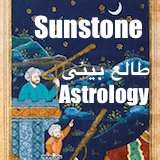Link
MajidNaficy 's Recent Links
The New Yorker: All the Films in Competition at Cannes 2025, Ranked from Best to Worst
MajidNaficy | 21 hours ago
0 51
The New Yorker: Returning to the Scene of My Brutal Rape
MajidNaficy | 21 hours ago
0 23
The New Yorker: In Praise of Jane Austen’s Least Beloved Novel
MajidNaficy | 21 hours ago
0 42
IAEA: Iran led secret nuclear activities according to a new report
Viroon | 16 hours ago
0 56
Category: None
Iran produces record amount of bomb-grade uranium ahead of renewed nuclear talks: IAEA
Viroon | 16 hours ago
0 57
Category: None










Comments